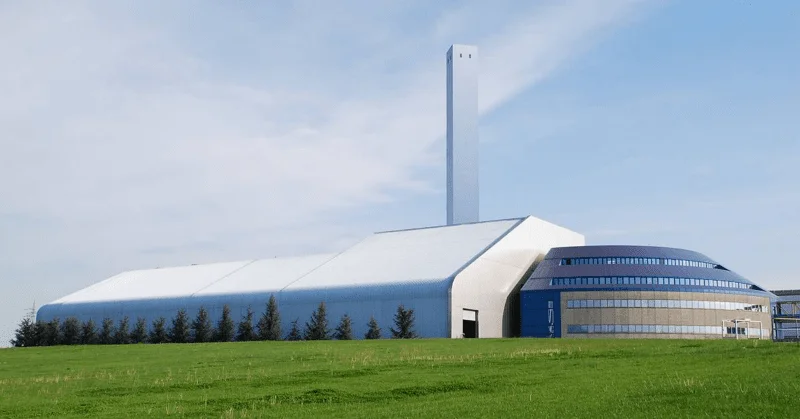
At Inspire Waste, we understand the dilemma business owners have when it comes to disposing of hazardous waste through hazardous Waste Incineration specifically or other waste treatment. There are many questions around the best way to dispose of hazardous waste, especially as we’re now seeing the long-term impacts of waste that haven’t been disposed of responsibly. Understanding hazardous waste incineration and its implications on the environment, the benefits it can provide, and how it can become a lifelong solution to dispose of hazardous waste are at the heart of our solutions for your business. We’re here, so you can be secure in the knowledge your business is part of the solution, not the problem.
Introduction to Hazardous Waste Incineration
Hazardous waste comes in many forms, and its disposal of has become a major concern for the UK. Previously, much of the waste streams, around 8,000 tonnes, were transported to China for recycling or other treatment facility, but this is no longer a viable option. Much of the plastic waste disposal was contaminated with other hazardous waste, which was then incinerated by the Chinese, but they are no longer willing to take on this role in the waste collection and waste disposal chain. The UK Environment Agency is placing greater responsibility on the UK to deliver its own, more efficient, and more effective ways of disposing and burning hazardous waste materials. Inspire Waste is rising to this challenge.
Healthcare Waste Incinerators can be roughly grouped into:
- High Temperature Incinerators (HTI)
- Clinical Waste Incinerators
- Residual Waste EFW Incinerators
The Healthcare Waste Incinerator facilities received 118,720 tonnes of Clinical Waste in 2019 and the HTIs received 126,788 tonnes of Hazardous Waste.
Get a quote to have your hazardous waste disposed of.
Get a quote
Can Hazardous Waste be Incinerated?
A huge variety of hazardous waste can be incinerated safely and securely. Hazardous waste management includes some of the most well-known products which are sent for secure destruction and utilisation:
- Medical Waste – Infectious and Radioactive
- Clinical Waste
- Cosmetics
- Pharmaceutical waste / laboratory waste
- Pesticides
- Commercial and Household Paints
- Radioactive Waste
Inspire Waste uses many disposal options for waste disposal including the most difficult materials in waste hierarchy like pharmaceutical waste and radioactive waste management.
What Waste Cannot Be Incinerated?
There are some substances which cannot be incinerated at a hazardous waste incineration facility:
- Activated Carbon – This is used in purifying public drinking water, industrial pollution control and the manufacturing processes of certain food and drinks.
- Animal Fats – These are highly flammable and uncontrollable, which leads to further issues within an incineration plant.
- Agrochemicals – Some specific chemicals release harmful gases when they’re exposed to high temperatures. As air pollutants, they could lead to environmental and human health consequences.
What is Hazardous Waste Incineration Plant?
The different types of hazardous waste incineration facilities ensure the full destruction of hazardous materials, so they don’t become air pollutants and contaminate soil or natural environment. The burning process is associated with lower-level emissions control of greenhouse gases and is known to eliminate poisonous gases including dioxins and furans. These toxins can travel through the air and settle on crops and water sources, such as rivers and lakes, causing irreversible contamination and disrupting the food chain for humans and animals. The incineration process allows better pollution control and reduces the reliance on the use of fossil fuels for energy production, reducing carbon emissions and damage to the wider environment.

The Hazardous Waste Incineration Process
Significant steps have been made around the world when it comes to incinerating hazardous materials and the continued improvement of hazardous waste incineration facilities. Countries like Germany, Denmark and the USA have reduced the solid mass of the original waste using the incineration process to provide a reliable waste to energy conversion. Inspire Waste is leading the UK into the future – reclaiming this energy thanks to development of incineration technology has become an integral part of our strategy for the management of hazardous materials disposal.
Burning Hazardous Waste
Burning hazardous waste in an incineration waste facilities can be described as giving waste the thermal treatment, ensuring these types of difficult waste are thoroughly destroyed and contained. This high-temperature incineration takes hazardous waste and changes into other substances, such as gas, heat and flue ash. These new recovered substances can create reusable energy stores for redistribution, turning them from hazardous waste into valuable resources.
High-Temperature Incineration of Hazardous Waste
Solid Waste Incinerators can reduce the overall mass and volume of waste by up to 80 and 90 % respectively. The super high temperatures, often up to 1200°C are integral to breaking down toxic compounds and protecting the atmosphere from the release of toxic materials and the release of greenhouse gas emissions. These extremely high temperatures also produce the chemical reactions needed to create new and reusable forms of electricity and material redistribution.
What’s The Difference Between Incineration And Hazardous Waste Combustion?
Hazardous waste combustion is the chemical process which includes the reaction between the hazardous substances and oxygen, which produces energy as a by-product, and is vital in a variety of industries. Incineration can be described as the destruction of something through the process of burning. The organic matter is burned to produce ash, flue gas and heat as final viable and reusable products. Incinerators reduce the reliance on fossil fuels for energy production, preserving the environment.
What Are The Types of Incinerators for Hazardous Waste?
There are 4 main incinerator plant designs which are most commonly used to incinerate hazardous waste around the world.
- Simple Incinerator
- Fixed or Moving Grate Incinerator
- Rotary Kiln Incinerator
- Fluidized Bed Incinerator
What Are The Common Health Problems Associated With Poor Waste Management?
Health problems are also a major consideration, and previously poor waste management and old incineration technology has lead to human and animal health implications which have serious consequences.
For humans, these can include:
- Respiratory Issues, often associated with air pollution
- Reduces the chance of biological waste contagions in the populations
- Blood Infections and Fatalities
- Skin Allergies and Irritations
- Various Strains of Cancers
- Reproductive Issues
For the wider environment, poor hazardous waste management has driven changes which have included:
- Animal Mutations
- Destruction of Natural Water Sources
- Infection of crops and a mutation of the food chain for animals and humans
Get your quote today to incinerate your hazardous waste.
Get a quote
Which is Better Landfill or Hazardous Waste Incineration?
The recovery of energy and reduced level of greenhouse emissions makes a solid case for incinerating hazardous waste. There is also the fact that burning reduces the amount of toxins which can seep into the soil and poison the ground when they’re left to languish at a landfill site. When it comes to the decomposition of waste, the landfill sites only allow for the thorough degradation of organic waste materials which continues to accumulate over time. In turn, the landfill sites themselves are becoming overwhelmed and less environmentally friendly.
Is The incineration of Hazardous Waste Better Than Recycling?
Over the last 20 years, the UK government has introduced waste legislation to reduce the quantity of waste sent to landfill and to focus on recycling as a more environmentally viable option. Incinerating hazardous waste can be seen as a part of the recycling process, as new reusable and safe supplies of energy are being created and redistributed. Incinerator operators can also redistribute materials thanks to materials recovery facilities. Materials produced through burning, such as ash, can be sent to industries such as construction, saving valuable raw resources, including fossil fuels, from being used in the process of creating new industrial waste.
How Does Incineration Help in the Management of Hazardous Waste?
The incineration of hazardous materials reduces the overall volume of the hazardous waste which imposes a detrimental effect and has long term implications for the global environment. It stops hazardous waste from seeping into natural water sources and poisoning the soil in and around landfill sites, which could affect the wider geographical area. Medical Waste Incinerators keep hazardous medical waste away from the general public, reducing the possible spread of infectious diseases into the general population. It can also be a part of energy recovery process.
What Are The Advantages of Incinerating Hazardous Waste?
There are several advantages to incinerating hazardous waste:
- Incineration could reduce overall waste volume by up to 90%
- In areas where landfill space is limited incineration facilities can take up the slack
- Incineration is more hygienic when it comes to smells and pests released into the environment
- Incineration is an alternative and reliable source of generated electricity for homes and industry
- The ash produced can be reused in the construction industry for road building
- Metal can be extracted from the ash and reused by Industries such as the Steel Industry
- Incinerators reduce the reliance on fossil fuels for energy production
How many incinerators are there in the UK?
There are over 90 incinerator units across the UK. A number of North East hazardous waste incineration plants were decommissioned including Byker, South Shields, Sunderland, Tynemouth and Gateshead Incinerator. Inspire Waste is here to make sure your hazardous waste is efficiently and safely incinerated at an inspected hazardous waste incineration facility.
Hazardous waste incineration facility UK
Inspire Waste will responsibly dispose of your hazardous waste in a safe and reliable process through our approved incineration facilities. We understand the corporate responsibility and the implications for business owners who need to dispose of their hazardous waste safely and with complete reliability, giving you the peace of mind to concentrate on running the other areas of your business.





